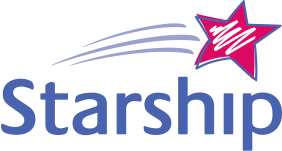Burns and scalds: 5 - 9 years
How big a problem is it?
Over 250 children are hospitalised or die from burns each year. This is a rate of about 27 per 100,000 children.
Who does it affect?
It’s mostly children under the age of four that are at the highest risk, but the risk of burns is still present for older children aged 5- 9, with over one child in this age group hospitalised every two weeks. Pacific Island and Maori children were hospitalised from burns at roughly three times the rate of European children in the period 2013-2017.
Top Tips
People working in this field of injury prevention also suggest the following tips will help your child avoid injury.
Children are inquisitive and will play with matches and lighters so keep them locked away.
Set your hot water tap to between 50-55 degrees centigrade.
Every house should have a working fire alarm on every level and in each bedroom living area and hallway. Make a note to check them monthly and to change the battery twice a year.
It's tempting to eat and drink or even cook while holding tamariki but these are the most common reasons for burns and scalds. Try serving cold drinks when children are present and to have a tea break when they're sleeping.
Put safety covers on all electrical outlets as kids love to explore and will readily put a fork or keys into a wall socket.
Tablecloths and large placemats can easily be pulled by little kids, bringing hot food and drinks down with them. To prevent this from happening, avoid using tablecloths and use only small placemats, and always put hot drinks in the middle of the table so they can't be reached.
Make sure you place hot appliances such as the iron and hair straighteners out of reach after they've been used.
Use protective screens to stop children getting too close to fireplaces. These will also prevent their clothes from accidentally catching on fire.
If you have small children around you while you are cooking, remember they love to reach, so remember to turn pot handles towards the back and block access to the stove. Keep hot foods and drinks away from the edge of the counter.
Before you start to cook, organise your tamariki with activities so that you know where they are and what they are doing, or place them somewhere safe such as in a playpen or secured in a highchair for a short time.
Include older kids in cooking so you can use the opportunity to teach them how to cook safely. Only let them use the microwave when they are tall enough to reach inside safely and remind them to always use oven gloves when taking food of the stove and out of the oven.
When you are filling the bath or sink, turn on the cold water first and turn it off last. Check your child's bath water with you wrist before letting them get in.
The sun can heat up playground equipment quickly and burn a child's thin skin. If it's a very hot day, only use the play equipment in the morning and in the evening when it has had a chance to cool down.
First Aid
If your child has a serious burn or scald that is causing a lot of pain or involves their eyes, call 111 immediately.
How you can help
Run cool water from a tap or shower over the burn for up to 20 minutes or until an ambulance arrives.
When the burn has cooled, carefully remove clothing from the area, cutting around the fabric if it is stuck.
To prevent infection, loosely cover the burn (except when on the face) with a clean non-fluffy material such as a sheet (or plastic wrap), and avoid touching the burn.
If the burn is causing on-going pain or involves the eyes, see your doctor as soon as possible.
Links to Safekids’ resources
Burns Injury Prevention resources
Links to other organisations’ information
NZ National Burn Service Patient and Whānau Information
NZ Fire and Emergency Home Safety Information
